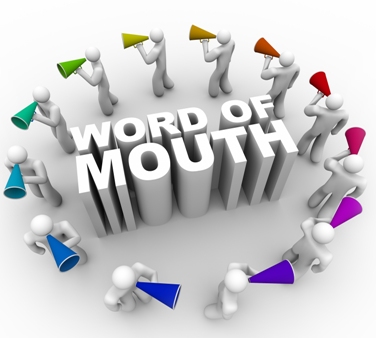 What is it about word-of-mouth that gets marketers excited? Your friend might not be an expert, but according to research by Nielson “ninety-two percent of consumers around the world say they trust earned media, such as word-of-mouth and recommendations from friends and family, above all other forms of advertising.”
What is it about word-of-mouth that gets marketers excited? Your friend might not be an expert, but according to research by Nielson “ninety-two percent of consumers around the world say they trust earned media, such as word-of-mouth and recommendations from friends and family, above all other forms of advertising.”
Companies pour millions of dollars into traditional media advertising, but why do they do this when word-of-mouth is so much more likely to drive sales? It’s because activating your customers to work for you as your brand advocates is hard work. It takes time and effort to build brand advocacy: the effects are long-term rather than immediate, and companies like to see a return on their investment sooner rather than later.
But for those brands that harness the power of trusted sources in the form of word-of-mouth, the rewards are incredible, and long lasting. For a long-term pay back you need a long-term strategy.
You just have to look at the tremendous growth of retailing site Amazon to see the power of reviews. When the site was in its infancy CEO Jeff Bezos insisted on allowing negative as well as positive reviews. Such a thing was unheard of and investors were strongly against the idea, but Bezos persisted and the review system has become one of the biggest strengths of the site. Not only are there reviews these days, but even the reviews are reviewed, with ‘helpful’ buttons that customers can vote on.
The rise of social media has made the popularity of brands instantly visible, and audiences are able to interact with their favorite companies like never before. Fans can ‘Like’, follow and watch the latest video posts from brands, with their activity showing up in their timelines so their friends can see and be inspired to get involved too. Social media has now taken center stage in marketing campaigns, with popular campaigns designed to be shared on social networks alongside regular, traditional media. Audiences trust what their friends are sharing, and will be more likely to watch a video or click a link shared by their friends.
But the issue of trust has got more complex as some companies realized the selling power of peer reviews and invested money in fake reviewers to post up five-star reviews on sites like Amazon. Botnets can generate fake clicks automatically to make a post appear more popular, and Facebook has allegedly recently removed thousands of fake ‘Likes’ from their site. Gartner estimates that by 2014, 10-15% of social media reviews will be fakes, paid for by companies. That is why Amazon introduced its ‘helpful’ review feature, in order to combat anomalous reviews. But, naturally, as fast as extra checks are introduced, companies can pay fake users to endorse reviews. As social media becomes central to marketing campaigns, the stakes are raised and investment in large social media followings will increase.
The Gartner report estimates that “at least two Fortune 500 brands [will be] facing litigation from the U.S. Federal Trade Commission (FTC) over the next two years.” Companies who try to cheat the system erode trust in social media endorsement, and their own reputation is instantly damaged. Just as positive messages can go viral on social media, negative ones can go viral too. Brands who try to underestimate the importance of trust will quickly find their strategies backfire.
The drawbacks of trying to deceive your audience far outweigh the short-term gains of ‘Likes’ and follows. In an era when trust is more important than ever, trying to cheat the system will lose you that trust very quickly. Although it takes time and effort to build up communities and ignite true movement, in the long run the pay-off is worth it, and it will be less effort than trying to re-build trust once you have lost it.
Don’t believe me? Just take a look at the studies done by multiple companies out there. According to Deloitte, customers referred by other loyal customers have a 37% higher retention rate. ComScore says that advocates tell twice as many people about their purchases than non-advocates. And according to Zuberance, offers shared by trusted advocates convert at 4-10x higher rate than offers sent by brands.
If you want real ‘Likes’, follows, reviews, and passionate recommendations, both online and offline, don’t try to go out and invite more guests to your party. First take care of those who already came to hang out with you and who already love you. You will have to work to retain those relationships, but this work will reward you with that ultimate goal for marketers: a loyal community who will recommend you to others and bring their friends and family along. And in every single case the smaller community of passionate people having smaller reach will result in substantially higher impact on purchasing decisions and on breeding further advocacy than a million Likes ever could!
For a long-term pay back you need a long-term strategy. Click To TweetOriginally in Fast Company
